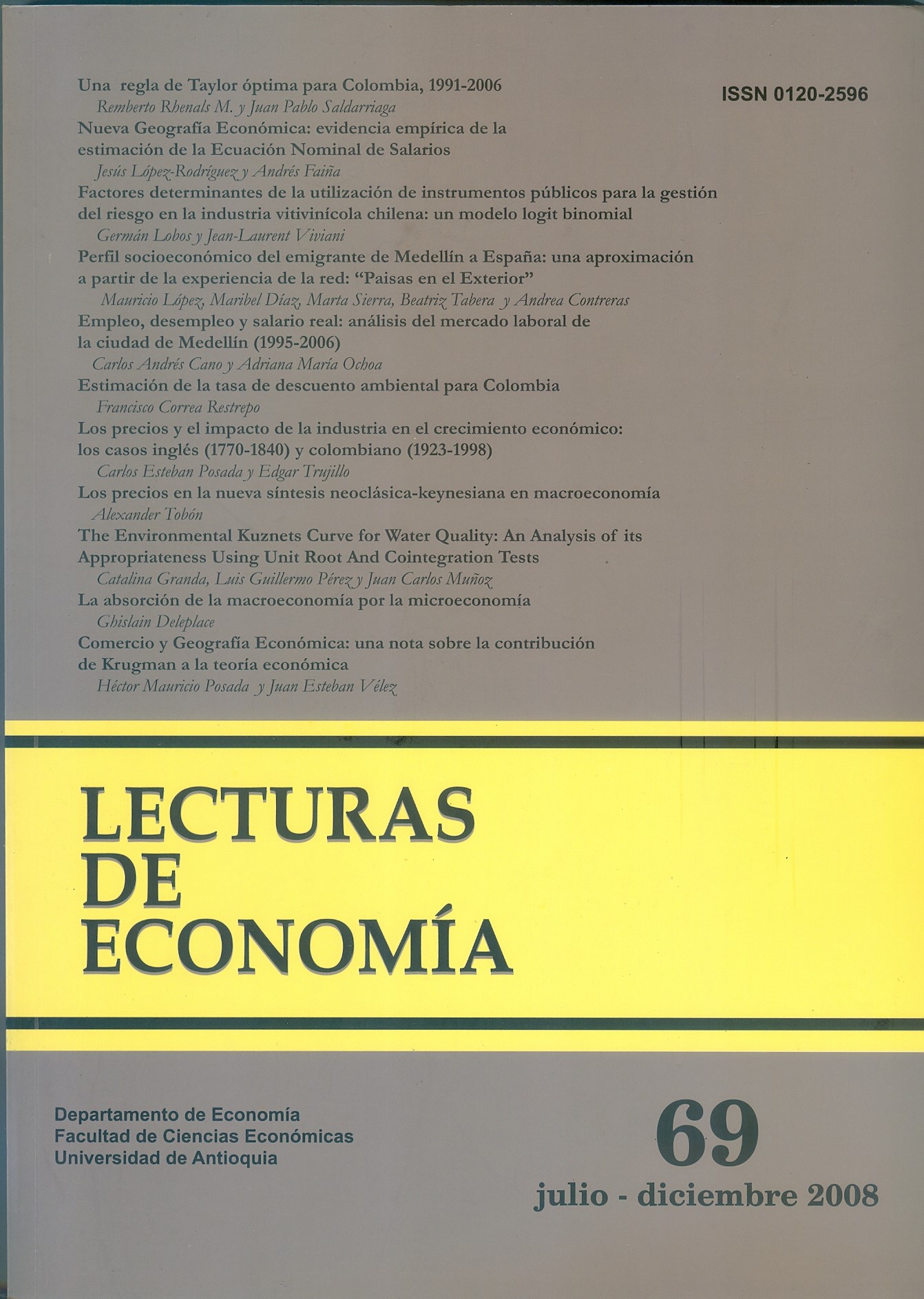
Lo más reciente
The Environmental Kuznets Curve hypothesis suggests the existence of an inverted U-shaped relationship between environmental degradation and income. Several economists assume that the environmental impacts occurred during the first stages of the development process will be reverted as a result of economic growth. Yet Perman and Stern (2003) have argued that the econometric methods used in the earlier analysis of the EKC are inappropriate, given the time properties of the series. This article examines the appropriateness of the EKC for a panel of 46 countries and 21 periods by implementing individual and panel tests for unit roots and cointegration. An error correction model is also estimated. The results do not support evidence of a common EKC for the countries analyzed.

 Juan Carlos Muñoz,
Juan Carlos Muñoz,